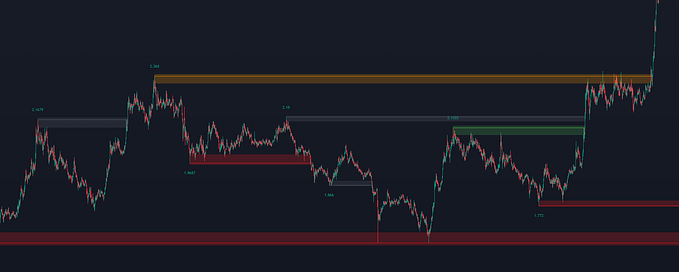What You Need to Know About Optimizing Gaming Software for Different Devices and Platforms
With these professional hints and techniques, you can learn how to adapt your game program for various hardware types.

It takes more than simply amazing graphics and entertaining gameplay to develop a successful game. In order for your game to function properly and give players the best experience possible, it’s also crucial to optimize it for various online casino platform and gadgets. Optimizing your game can seem like a daunting undertaking with the wide variety of devices available, from smartphones to gaming consoles. But if you use the appropriate methods and ideas, you can make sure that your game is a success on all available platforms.
In this blog post, we’ll look at some of the important things to keep in mind when adjusting your game for various screen sizes. We’ll talk about everything, including input techniques, performance factors, and screen resolutions and aspect ratios. These pointers and techniques will assist you in producing a flawless and satisfying gaming experience for your users across all platforms, whether you’re making a mobile game or a blockbuster console title.
GammaStack provides thorough support services to assist you in effectively launching your game. GammaStack can offer the direction and resources you need to guarantee that your game reaches a large audience and offers a flawless and pleasurable gaming experience, from marketing and advertising through post-launch support and maintenance.
Optimising Graphics and Performance: Tips and Techniques
One of the most crucial factors to take into account when tailoring gaming software for various platforms and gadgets is visuals and performance. In this section, we’ll look at several strategies for making sure your game looks amazing and performs well across all platforms.
Adjusting Graphics Settings
Changing the visual settings should be one of your first priorities when making your game mobile-friendly. This covers elements like anti-aliasing, texture quality, and shadow quality. You may ensure that your game performs well on less powerful devices without sacrificing visual quality by modifying these settings. For instance, to save memory and processing power on a mobile device with a smaller screen, you might wish to lower the texture quality.
Using Adaptive Resolution
Performance on devices with different hardware capabilities can be enhanced with the use of adaptive resolution. In order to keep the frame rate constant, the game essentially changes the resolution in real time. This implies that when there is a lot of action on the screen or when the device’s processing power is being strained, the game will automatically lower the resolution. By doing so, latency and other performance problems may be avoided.
Streamlining Game Assets
The assets in your game should be streamlined as another technique to enhance performance on various devices. Compressing audio files, shrinking the amount of objects in a scene, and lowering the size of textures are a few examples of what is meant by this. Reducing the quantity and complexity of your game’s assets will speed up loading times and use less memory, which will enhance performance on devices with lower processing power.
Optimizing Input and Controls
Aside from visuals and performance, it’s crucial to adapt your game’s input and controls to various platforms. The use of touchscreens and gamepads can be improved, as well as the size and positioning of on-screen buttons. For instance, you might want to check if the buttons on a mobile device are big enough to be readily pressed with a finger.
Designing customized user interfaces for different devices
It’s critical to take the user interface (UI) of each device into account while developing gaming software that is optimized for various platforms and devices. It’s crucial to design UIs that are specific to each device because one that functions well on a desktop computer might be difficult to use on a mobile phone or gaming console. We’ll look at some pointers and best practices for designing efficient user interfaces for various devices in this section.
Understanding the Device’s Capabilities
Understanding a device’s capabilities and limits is crucial before designing a user interface for it. For instance, a mobile device could have a smaller screen and fewer buttons than a desktop computer, therefore the user interface (UI) should be tailored for touch input and made easier to use. The UI should be created with this in mind because a gaming console may have a more complicated controller with many buttons and analog sticks.
Consistency Across Devices
While it’s vital to tailor the user interface (UI) for each device, it’s equally important to maintain uniformity across all platforms. This entails adopting consistent design components across all platforms, such as color palettes and fonts, and making sure the UI is user-friendly and simple to use. Regardless of the device they’re using to play, this uniformity makes the game feel familiar and inviting to users.
Touch Input for Mobile Devices
The UI should be designed for touch input since it is the main mode of interaction for mobile devices. This entails eliminating small or closely spaced items that are challenging to pick precisely and employing large buttons and icons that are simple to tap with a finger. As many mobile players hold their device with one hand while tapping with the other, the UI should be created with one-handed play in mind.
Controller Input for Consoles
The UI for consoles should be made to function nicely with a game controller. This entails avoiding complicated or multi-step interactions that are challenging to carry out with a gamepad and instead employing buttons and icons that are simple to pick with the controller’s buttons and analog sticks. TV screens, which may be watched from a distance and have a lesser resolution than a computer monitor, should also have the UI optimized for them.
Scalability for Different Resolutions
Finally, it’s critical to consider scalability while designing the user interface. This entails designing a user interface (UI) that can change in size and resolution without losing functionality or seeming deformed. The UI can be designed with responsive layout approaches that alter the UI elements dependent on the screen size, vector graphics, and scalable font sizes.
You may construct efficient and unique UIs for various platforms and devices by taking into account these elements and applying best practices for UI design, assisting in offering gamers an interesting and simple gaming experience.
Wrapping Up
No matter the device your gamers are using, you can create a flawless and delightful gaming experience for them by implementing the advice and methods provided in this blog post. Optimizing gaming software for various platforms and devices can be a difficult and complex task. You may make a game that runs smoothly and looks fantastic on all devices by being aware of the variations among platforms and devices, optimizing visuals and performance, and designing unique user interfaces.
GammaStack provides a variety of services, such as game design and casino game development, quality assurance testing, and game deployment and launch support, to assist you in optimizing your game. Their team of specialists will collaborate together with you to comprehend your goals and specifications for your game before developing a unique solution that satisfies your requirements and goes above and beyond your expectations.









